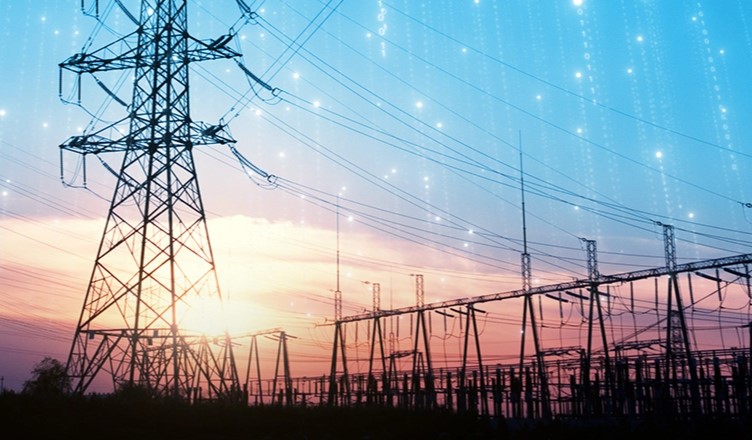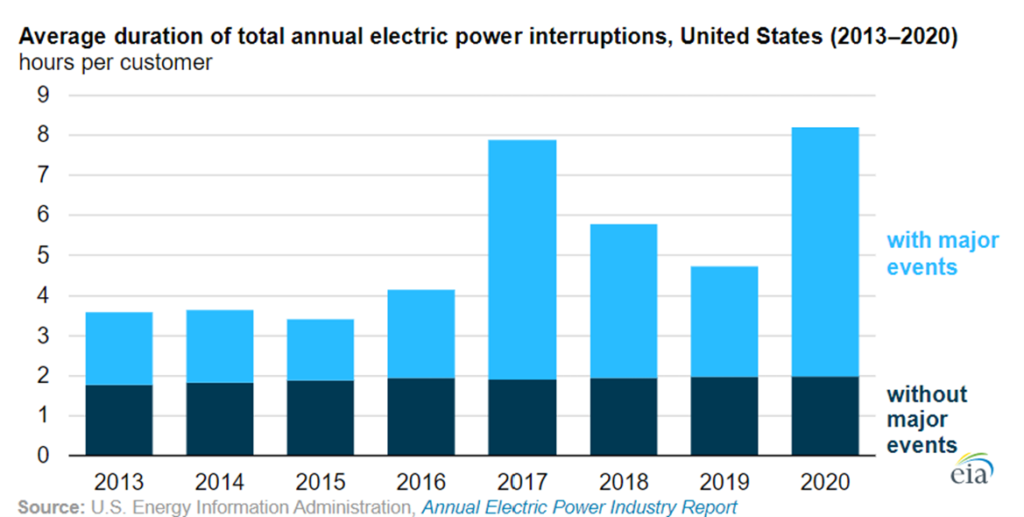
Graduating from college with a degree in electrical engineering in the 1980s, I expected to be working in advanced electronics and computer engineering, but there I was in an industry that had had little technological change in decades and appeared to move at the speed of a snail in terms of modernization. The introduction of desktop computers, along with the ability to model distribution systems and apply spreadsheets to more advanced load forecasting techniques, were the pinnacle of nerd excitement for me back then. More recently, the changes in the industry, and demand for innovation, have been staggering. After spending the bulk of my career focused on distribution planning and operations, I was extremely fortunate to spend my last 5 years in a group devoted to “Grid Modernization”, helping the company begin to navigate a number of new challenges, including the need to model the distribution system in ever greater detail, while incorporating a variety of distributed energy resources (DERs). Nirvana for my inner grid geek.
I now have the privilege of working for Parsons and being involved in an industry that will play a huge role in helping states, municipalities, and utilities with this challenge of aggressive, long-term modernization of the grid. This series will be devoted to the subject of grid modernization and will delve into the elements of the grid most impacted by this truly epic evolution that has only begun to get underway. Future articles will focus on the transmission and distribution systems, vehicle electrification, battery storage, and other new technologies at the grid edge. Each of these areas present exciting project opportunities for years to come.
As mentioned above, when I first started in this industry, technological advances were minimal, but the system worked …incredibly well, I might add! The electric grid has long been described as one of the greatest achievements of the 20th century, and I could not agree more. Society has been provided access to a huge supply of energy in an incredibly simple, efficient, and cheap manner. “Cheap” is a relative term, of course, and the rising cost on electric bills is of concern to many people. Bear in mind, though, that a single kilowatthour (kwhr) of electric energy (costing around 20 cents here in Connecticut) is the human-energy equivalent of a full day of vigorous yardwork, or a few hours of bench pressing 100 pounds! An average household uses around 15-20 kwhr per day, not including heat or air conditioning. All that energy for about the same cost as a coffee and bagel. Not a bad deal when you consider that.
The grid has become so ubiquitous to daily life, that it is scarcely noticed or considered…at least until it suddenly becomes unavailable. Fortunately, that is rare in most of the country. In general, electric service is available 99.9+% of the time for the majority of households, meaning the average time spent without power is only a few hours per year. It won’t stay that way forever, of course, at least not without proper maintenance, repair, and replacement as components of the grid reach end of life. That time has come for many grid assets, and with the growing demands of DER integration and the electrification of transportation and heating loads, investment in the grid is poised for tremendous growth.

In concert with the recently passed infrastructure bill ($65 billion of which is dedicated to the electric grid), three key issues will be driving major investment in the electric grid:
- Aging Grid Infrastructure
- Reliability and Resilience Improvement
- Lower Carbon Energy Transition
These very interrelated drivers will prompt investments in grid transmission and distribution systems, generating plants, utility IT systems, and “behind-the-meter” (BTM) customer assets and devices, as well as a more robust communications network to tie everything together.
Aging Grid Infrastructure
Much of the grid was built out in the mid-20th century, and a significant portion of those assets installed back then are still in place. Proactive asset replacement programs tend to be very expensive and difficult for utility companies to justify to rate-setting authorities. Hence, we now have a grid where a large percentage of key assets, like substation power transformers, breakers, transmission and distribution lines, and the structures supporting them, are nearing or beyond their technical end of life. Underground cable, along with vault-enclosed network transformers and other equipment, was installed by utility workers who passed on long ago. Large portions of the grid are simply very old. The challenge for the industry now is to catch up with system upgrades and replacements, ideally incorporating the key drivers of reliability, resiliency, and decarbonization in the prioritization of this work. Naturally, it is also important to avoid high profile and expensive events that highlight the fragility of the grid, such as the California wildfires caused by aging power lines failing in high wind events.
Reliability And Resilience Improvement
I will always remember working (and suffering) through the massive power outage event caused by a freak October snowstorm in the northeast in 2011. I worked long night shifts for a week and a half, with no power at home for almost half of that. The majority of the state of CT was knocked out, including a significant number of transmission lines, with damage due to falling leaf-laden trees after a foot and a half of heavy wet snow crippled the region (see image below). In parts of the state, damage to the distribution system was near cataclysmic, and required complete rebuilds in many neighborhoods.

This event, along with Hurricanes Irene and Sandy, all happened in a span of 14 months, and hammered home a new reality to me. Society can no longer tolerate extended periods without power. The grid must be made to withstand, and quickly recover from, extreme weather events. More recently, the Texas deep freeze and Hurricane Ida in New Orleans provide further examples, where long-term outage events are not only inconvenient, but can be life threatening.
Utilities will continue to strengthen the transmission and distribution systems to better deal with events like this. More aggressive vegetation management, along with stronger conductors, poles and towers, and additional circuits to provide alternate paths to route power, will all play a part, as will targeted undergrounding of circuits that are most critical. In addition, new technologies associated with distributed energy resources and vehicle electrification will help add resilience at the grid edge.
Low Carbon Energy Transition
Society’s move to decarbonize as much of our energy supply and demand as possible made apparent through growing state and federal clean energy goals is extremely dependent on the expansion and evolution of our electric grid. This will certainly be the largest driver of grid modernization over the coming decades. As mentioned above, the vast majority of the grid was built out in the mid 1900s, and the latter half of the century saw little change to the design. A relatively small number of large generators (mainly coal, natural gas, nuclear, and hydro-electric) supplied power predictably through a broad, regional transmission grid to distribution substations which supplied power to customer load in a generally radial (one direction) fashion.
Electrification of transportation (including cars, buses, ferries, and a variety of commercial and public vehicle fleets) and home heating (electric heat pumps) is already well underway and poised to grow dramatically in the near future. Aside from immediate environmental benefits, battery powered vehicles have the potential to be beneficial grid assets, as well as a resilient backup power source during grid outages. A great example of this vehicle-to-grid (V2G) benefit will be school bus fleets, which have a usage schedule very complementary to the grid’s need for energy storage. School buses tend to be parked during the middle of the day when solar generation is peaking, and then later in the day when battery storage can help dampen the rapid drop in solar generation.
Electrification also has the potential to increase demand significantly. Utilities may need to replace millions of smaller poletop transformers as home EV charging becomes more common in neighborhoods across the country. Substation and feeder upgrades could be necessary, especially where any significant fleet charging infrastructure is installed. How and when this additional load is supplied will determine how much of the existing grid’s “unused” capacity can be leveraged. Today’s grid has a relatively poor load factor, with system peak loads being much larger than average loads, and those peaks occurring for a small percentage of the year. More intelligent systems, which can incorporate a variety of DERs, will be needed to flatten out the daily and seasonal load profiles, and temper the need for traditional grid upgrades wherever possible.

The integration of vast amounts of renewable and intermittent generation sources, many of which are located far from major load centers or existing fossil fuel plants, is requiring new transmission lines (overhead and underground/undersea), as well as upgrades to existing lines. It is also requiring changes to the way the grid is operated, with new challenges to maintaining the critical balance of generation and load. This can be seen most notably in California, where a huge amount of solar generation rapidly drops in the late afternoon, requiring other generation sources to ramp up quickly. The daily load profile is shown here from the regional operator (CAISO) clearly illustrates the famous “duck curve” phenomenon. Energy storage and other distributed energy resources (DERs) will be a big part of the solution here, but so will additional long-distance transmission lines which can access sources of generation from other parts of the country.
Presently, in this early stage, the estimates for the magnitude of necessary transmission expansion are daunting, to say the least. One recent study from Princeton University estimates a near doubling of the existing transmission grid (about 160,000 miles) over the next 15 years to get on a path to net-zero carbon by 2050. That seems like a big stretch to me, but it gives an idea of the scope of potential work. Planning, siting, and approvals in any transmission work today take years for the simplest of projects. So, this will be a major challenge in the very near future.

The electric distribution system (generally from the substations to the streetside poletops) will need to be designed to routinely handle two-way power flow, intermittent generation from PV, and the integration of storage and intelligent demand response systems. This will require circuit upgrades and more active voltage management equipment, along with vastly more complicated central management and control systems.
Finally, advanced metering infrastructure (AMI) will continue to expand across the country, allowing time-based electric rates, as well as intelligent grid monitoring and control. This will enable more efficient coordination of utility equipment with customers’ flexible loads (Nest thermostat-controlled HVAC, for example), rooftop PV generation, and EV (and other home battery) charging and discharging. This kind of optimization at the “grid edge” has the potential to enable much higher penetration of commercial and utility scale distributed generation, mitigating the intermittency problem of renewables.
To learn more about modernization of the electric grid check out the rest of this blog series below!